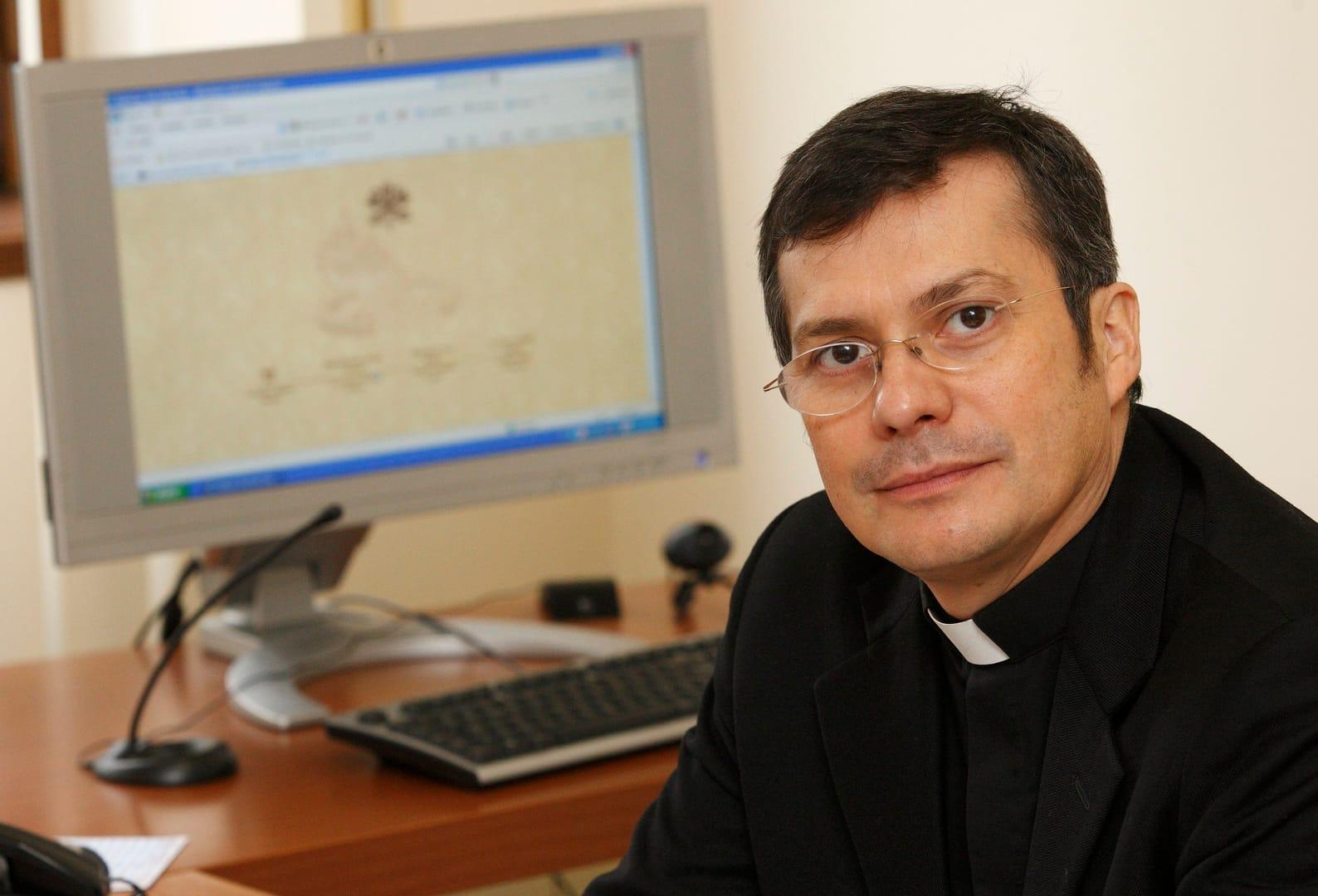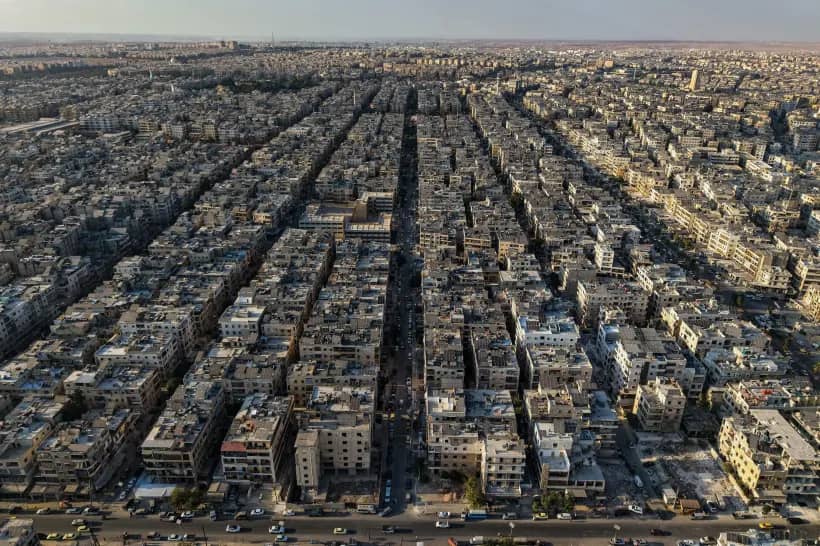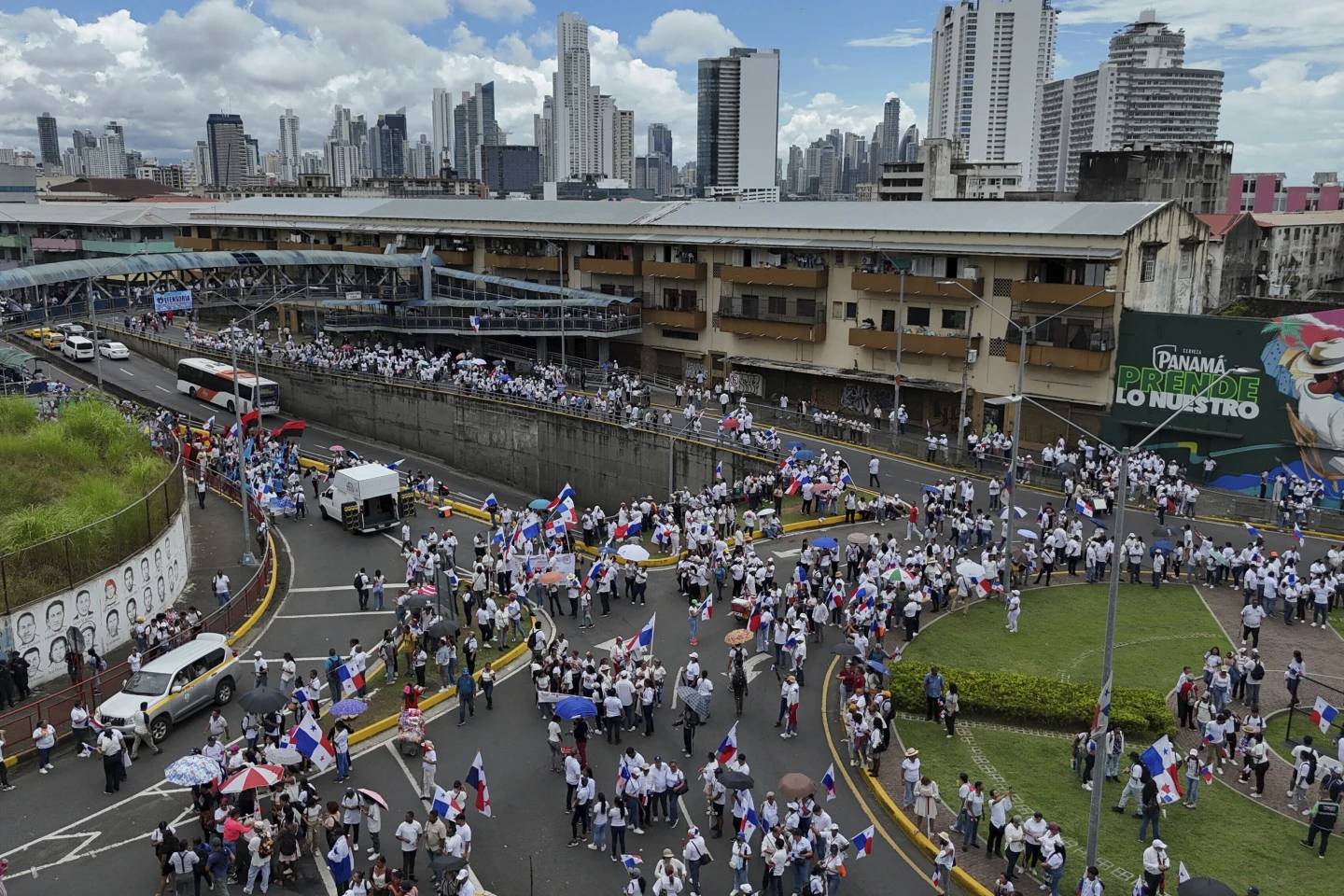ROME – A high-ranking Vatican official says the digital world is mission territory for the Catholic Church.
Argentine Monsignor Lucio Ruiz, secretary of the Vatican’s Dicastery for Communications, says that looking at this world with a missionary eye means that someday there might be an official “Pontifex” profile in Minecraft.
“We have to look at where people are, how they are, and go on mission, looking for ways to do it,” he told Crux.
Without the proper research and studies, he said, “we cannot say yes or no because there, in the virtual world, there may be a person who needs to be rescued, who is suffering. Who is going to teach the catechism to that person? Who is going to take him or her to visit a church?”
In recent months he oversaw a project called “The Church Listens to You,” that recruited 244 “influencers” as missionaries to try to have as many members as possible of the “digital generation” take part in the Synod on Synodality, a two-year listening process launched by Pope Francis that will conclude in Oct. 2023.
Ruiz spoke Tuesday with Crux about the influencers of the synod, his digital missionary zeal, and Minecraft. What follows are excerpts of that conversation, edited for length.
Crux: How did you get to Rome?
Ruiz: I was working in CELAM, for the Latin American Church Information Network project, as continental coordinator, and I had come to present to the Special Assembly of the Synod of Bishops for America (1996) the importance of the church’s entry into digital environments for evangelization, projecting at the time that it was going to be a reality that the future would present to us.
While I was here for that, Cardinal Dario Castrillon Hoyos, then prefect of the Congregation for Clergy, asked me if I would be willing to work for the pope. As I am a priest for the church, I said yes, and within a month I was moving to Rome permanently.
I worked 12 years as an officer in Clergy, because he had many important projects for the ongoing formation of the clergy through the computer: We made clerus.org (today clerus.va) and created a system of teleconferences with a circuit of 10 points throughout the world of theologians who spoke, had their conferences transcribed and sent via email to priests all over, and through CDs in the countries with no internet access.
Eventually, I was made head of the internet office, until Pope Francis made the reform of the Vatican’s communications’ offices, and I became the secretary of the Dicastery for Communications.
Is the digital world – the computer, the phone, the tablet – a mission territory?
Absolutely. Because technology can be understood as an instrument, but the reality that emerges from technology is not an instrument, it is a place where people exchange thoughts, feelings, time, affections, where they buy and sell things, where they write and share things with others. It is important to differentiate what is an instrument that I use to do something, from a place where people spend time.
Being a place where the person is, the church has to be there. And we have verified this in this time of listening to the Synod on Synodality. Many people turned to the digital spheres to express their suffering, their loneliness, their needs. There we verified that sometimes, where we do not reach with presence, we can reach through digitality, in a process of rapprochement, of encounter. But for this, we need to be missionaries, to go to where the people are in order to embrace them, to bring them closer. But we are not inventing digitality.
The digital is different from the virtual, which does not exist; it is a construction of the system, like video games. The digital, on the other hand, is the real, but through computer instruments.
I used to tell the computer missionaries that our time, our affection, our conversation and our faith are all real. The only thing that is digital is the medium through which we connect, but there is nothing virtual in the link. It’s important to understand that because digitality allows us to be in places, sharing with those who are far away.
There is a huge amount of possibilities that are real, but they are digitalized, where people pray, read the gospel, share, ask for help. And we could see this with Catholic influencers.
Catholic influencers, digital missionaries, were part of the project “The Church Listens to You.” How did you first reach these influencers?
It all starts with the desire to bridge the new culture and to be, as Pope Francis says, a church going out. We presented the project to the synod saying that if the church wants to listen to the whole church, we cannot forget that there is a part of the church that is not in our institutions and to whom we have to go as missionaries. Many of these people are in digital spaces.
We asked permission to do a test with three influencers to see what would happen. And the pilot experience was very good, although not great, and with many lessons. What surprised us was how people opened up to the possibility of sharing. There must have been around 1,500 people who responded in that first stage. The influencers themselves helped us to make the syntheses. And Cardinal Mario Grech, who presides over the synod office, liked the idea very much and asked us to continue with it.
We contacted the dioceses to see if each one had identified local Catholic influencers, but there are no such lists. So, we asked those three influencers for suggestions, because the digital continent is transversal. Each one introduced us to another influencer. And we found that the time was ripe: we did very little, approached three people, and it exploded, to the point that we now have 244 Catholic influencers helping in the Synod.
The whole project lasted for less than three months, and the first to take part in the synod were the influencers themselves, whom we told about the project. If they were interested, they were given a missionary send out: we met through Zoom to pray together, and they were given a blessing to go to the digital communities. It was impressive to see so many influencers in tears, who were excited and couldn’t believe that the Holy See was valuing what they do as a true mission.
What is the job of a digital missionary of the Synod?
They had to go through a synodal process, which is not simply filling a questionnaire, but a listening process. They had to do two or three catecheses with posts, reels or whatever was their forte, explaining that the church wanted to listen to them, not to change the doctrine, but to understand their lives and to know what they need so that the church can be closer to them so that they feel included. And after these posts, yes, people could answer the questionnaire. And a lot of people responded, even non-believers who had something to say to the church. And it was impressive, also to be able to understand why they stayed away. We were also surprised by the fact that the church was asking them questions.
Aren’t you afraid of generating more disillusionment if these relationships are forgotten after the Synod?
This was not an a posteriori fear, but one we had from minute zero: The first thing the influencers asked us was if we would abandon them when it was all said and done. They want for the Vatican to have a digital ministry and for the Catholic Church to open its eyes to see that these influencers are real missionaries, young people who love Jesus, who love the church and who help their neighbors.
We didn’t go to an influencer who sells potato chips to ask them to talk about Jesus, but we went to those who already talked about Jesus. The smallest of the influencers has 1,000 followers, and they said that they weren’t big enough to participate. But I don’t know many priests who every day of the year, at every Mass, have 1,000 people listening to their homily.
The sheep follow the good shepherd because they recognize his voice. People follow these influencers because they recognize something in them, because they accompany them, they help them in their life. A person follows an influencer because they like that voice.
Having been a “viral” process that went from three influencers to almost 250, weren’t you worried that these new influencers had an erroneous preaching? Or that they would not respect the teachings of the church in matters of human life – from conception to natural death, without abandoning the migrant, the poor, the destitute?
We have had millions of fears, not one, but always with the banner of Pope Francis who says that he prefers a church that is wounded because it goes out on mission to one that is sick because it is locked up, protecting its own things. We based ourselves on the apostolic chain: Each influencer was responsible for those to whom he presented the project. The condition was that they believed in God, followed the church, and loved the pope.
In the digital area, you projected into the future by working with the internet and the computer long before those tools were available to the masses. In the virtual world, how do you see this mission working? Can you imagine an official profile of the pope on Minecraft?
I think it is a very new reality, and to elaborate a thought, a theory about this you have to be careful and do it well. What guides me is being missionary, to look at where people are, how they are, and then go on mission, looking for ways to do it, perhaps with specialists in various fields.
A priori, we cannot say yes or no, because there, in the virtual world, there may be a person who needs to be rescued, who is suffering. Who is going to teach the catechism to that person? who is going to take him or her to visit a church?
It is something that needs to be studied, but with missionary eyes, so that we are able to look for people where they are.
I started with technology at the service of the mission when there were floppy disks, so after all this time, it would be easy for me to presume I have all the answers on these issues. But when you let yourself be challenged by reality, where there is a person who lives, who feels, who prays, who suffers, the missionary love of the church begins to respond in another way. It is the response of the mother church, which, seeing her son suffering, helps him.
The great response to the listening process is “samaritanizing.” Everyone is a Good Samaritan, who did not say, “I’m going to call my boss, he’s going to send you an ambulance.” It was he who rolled up his sleeves, helped him, put his money in. We don’t have to wait for the church to make a document to reach out to others in need, and this includes the digital world.
We were not the only members of the synod to use digital tools: many parishes filled out the forms online. The complementary particularity was not in using digital tools, but to try to do so with the eyes of the digital generations, to do it with their own language, with their own missionaries.
The continental process of the synod has been launched. Is there going to be a “digital continent”?
No, because calling it formally a continent will generate more problems than solutions, but we can speak of a process of digital listening, and each continent has the possibility of carrying it out.
We live in an environment that is both face-to-face and digital; one can build a real relationship at a distance through a digital medium. The peculiarity of our listening process wasn’t the medium, but the fact that we carried it out with the eyes of the digital generations. The value of our pilot project was to discover this reality of the church that also wants to be welcomed, guided and helped, because they have the ability to go to those who share this digital world and talk to them about Jesus, who is the one who really heals existence.
Follow Inés San Martín on Twitter: @inesanma













